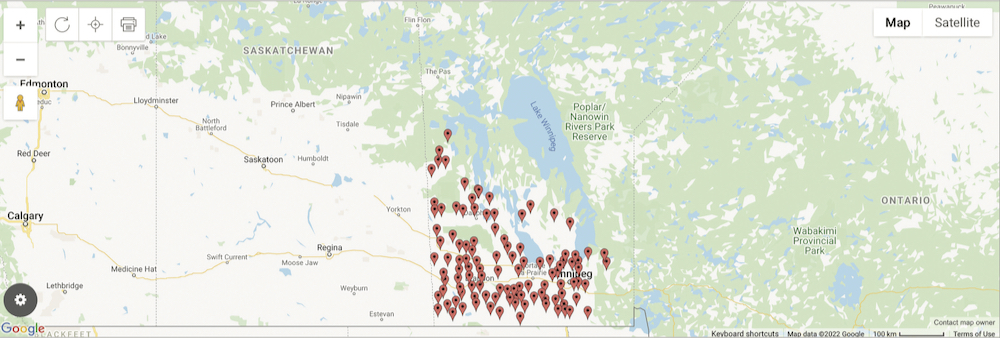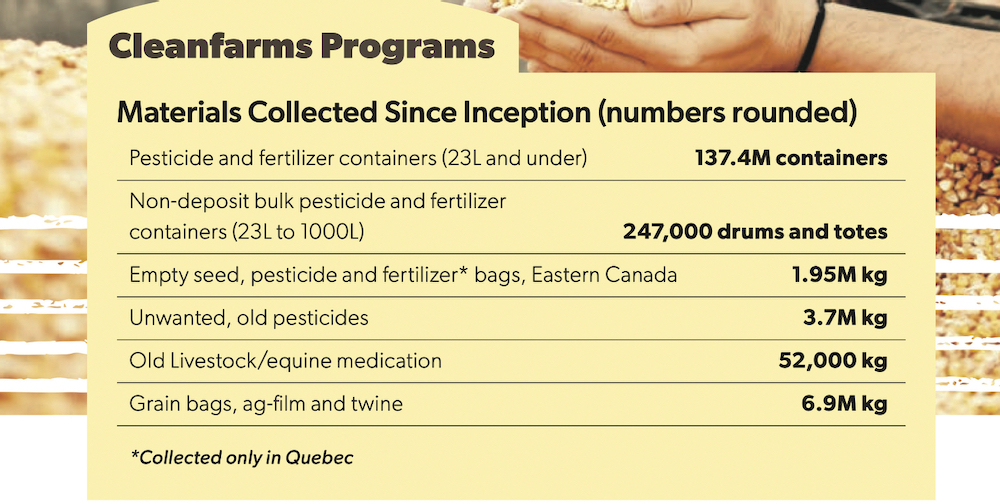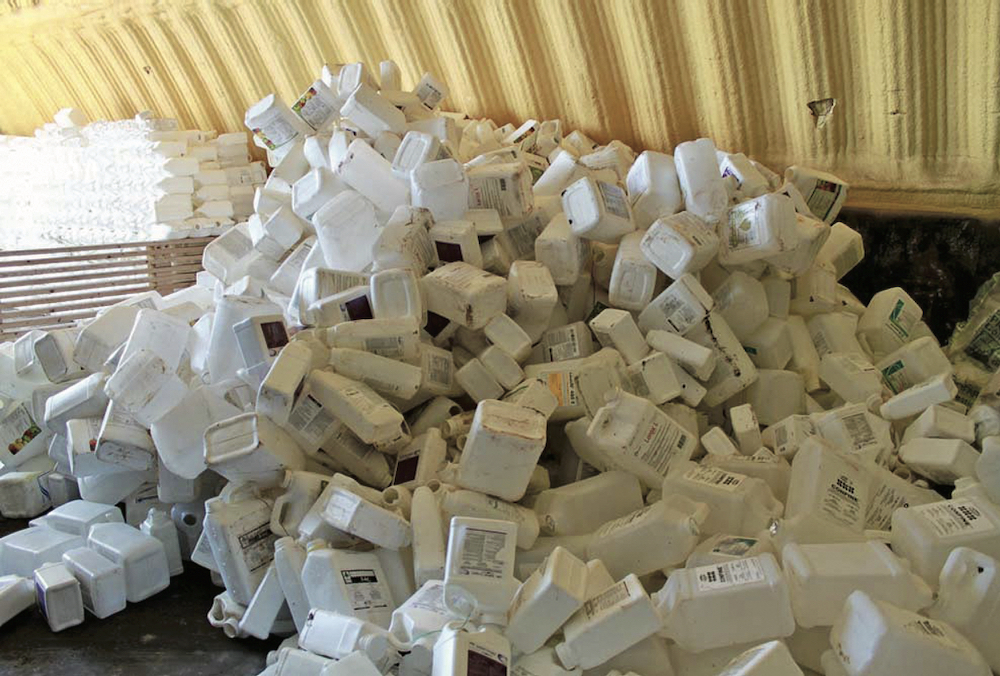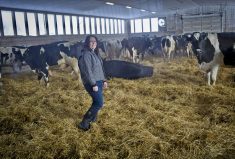Corrected, Feb. 9 — As resolutions go it was ‘mom and apple pie.’
But I was paying close attention, as it was from Reg Dyck’s ‘Issues in Agriculture and Food’ class for agriculture diploma students at University of Manitoba.
Two other reporters and I were to question the students during an online media ‘scrum’ two days later.
The students’ resolution was the last to be moved at the Keystone Agricultural Producers’ annual meeting held online Jan. 25.
It read: “Resolved, that KAP lobby the Government of Manitoba and rural municipalities to increase the number of locations in Manitoba that accept used pesticide containers and obsolete chemicals, and be it further resolved, that KAP work with Cleanfarms, agri-retailers, the Department of Agriculture and rural municipalities to increase awareness of the current pesticide container recycling program available to Manitoba producers.”
Read Also

New ranking elevates Assiniboine College to national research elite
Brandon’s Assiniboine College is 47th in a national ranking measuring research dollars and output at publicly funded institutions in Canada.
The ‘where as’ said Manitoba might not have enough collection sites and a lack of awareness might result in some farmers burying or burning containers instead of properly disposing of them.
Who wouldn’t support more ag chemical container collection sites and making farmers more aware of them?
Indeed, after five students spoke in favour of the resolution, KAP delegates passed it without debate.
Dyck instructed his class of around 40 students to come up with several resolutions for the KAP meeting, pick one, and then make the case for it.
To make it even more true to life, three reporters were invited to ask the students about their resolution Jan. 27.
I am writing about this, rather than reporting on it, hoping to add to the learning. And not just by the students, but Manitoba farmers and Cleanfarms, a non-profit organization that works with its members — pesticide makers and first sellers of imported pesticides — partner agencies, and the government, to collect empty pesticide containers, seed bags, grain bags and twine across Canada.
These are students learning about the policy-making process and deserve some slack. But the reporters were also asked to do what they do — ask questions.
As the students spoke to the resolution I wondered if their concerns were exaggerated — a common debate tactic. Is there evidence, I wondered?
One student said confusion around Cleanfarms’ program “creates a situation where farms resort to improper and unsafe disposal of these (livestock) drugs and obsolete pesticides.
“I want to stress the importance of this topic since producers are willing, and they have the want to dispose of these products safely and properly, but there simply is not proper information or access.”
Is that true? Cleanfarms has been around for more than 10 years, has a lot of information on its website and advertises regularly in farm newspapers.
Another student said: “We want to show people that farmers do care for the environment, but if environmentalists find out the amount of chemicals that we use and are rarely, or not often being disposed of properly, they wouldn’t be very happy with us and will have more ammo to attack us with. So we don’t think this is an overly difficult issue to fix and it’s something that could really improve the general perception of agriculture.”
The phrase ‘rarely, or not often disposed of properly’ was a red flag to a reporter. Where’s the evidence?
Several students claiming first-hand knowledge said pesticide retailers are confused about container disposal and Cleanfarms’ online disposal site map is inaccurate.
Their message? Cleanfarms was failing and as a result farmers aren’t properly disposing of their containers even though they want to.
I spoke to a Cleanfarms official before the scrum and interviewed its executive director Barry Friesen after the scrum Jan. 27.
I was told Cleanfarms collects 76 per cent of Canada’s pesticide containers, but that it wants to get to 100 per cent. (Cleanfarms knows this because pesticide companies tell it what was sold and collected containers are weighed.)
Cleanfarms advertises its services in farm newspapers and on social media. In Manitoba almost all the small (under 23 litres) pesticide containers are collected at authorized municipal garbage dumps and later picked up and safely recycled.
Cleanfarms has almost 1,600 collection sites across Canada for small and large pesticide containers, ag plastics and twine.
I counted 209 Cleanfarms disposal sites in Manitoba, including 111 small container sites. There’s one just a few miles from where I live.

Every three years, including this year in Manitoba, Cleanfarms invites people to bring unwanted pesticides and livestock drugs to specific locations. They will be taken away and safely disposed of.
Cleanfarms admits some of its online Manitoba Google maps have glitches. But Cleanfarms urges people to report errors so they can be corrected.
(I think this map is the most accurate: https://tinyurl.com/2p8bvn55.)
This site also lists in alphabetical order the municipal disposal sites, their GPS co-ordinates and the name and phone number of the contact person for the site.
The students say they looked at Cleanfarms’ website, but didn’t contact Cleanfarms.
That explains some of their confusion, but not all of it.
When I challenged the students during the scrum, they quickly pushed back. One pulled up Cleanfarms map, which showed three small container disposal sites in Stonewall, where in fact there are none. When I looked later, hovering the cursor over one of the sites the address was in the RM of Fisher.
“The sites exist, just not in Stonewall,” the student who pulled up the map said.
The students were right — this map had errors.
Full marks to that student for being prepared for the question and having the evidence at hand.
But the scrum also revealed students didn’t know small containers go to municipal sites or that there’s a program to take old pesticides.
When I suggested it would be easier to take containers to a disposal site than to burn or bury them the students ran a poll. Seventy-eight per cent of 18 respondents said they burned their containers, 17 per cent said they took them to a disposal site and the rest said they buried them.
If students don’t know where to take empty pesticide containers perhaps a lot of farmers don’t either.
Friesen said Cleanfarms’ research shows Canadian farmers are 90 per cent aware of its program.
“But it doesn’t necessarily mean everyone participates all the time,” he said. “Sometimes people will put it in a pit and light a match to it. Probably our biggest competitor is a Bic lighter. However, it’s not really the right thing to do. Those who are doing it are probably aware they can participate in the program.”
Burning pesticide containers is illegal, he added.

Some of the students said farmers want to dispose of containers properly but don’t have the resources or time.
There’s no charge to drop off containers, Friesen said. The cost is built into the price of the pesticide. And while the maps sometimes have glitches, he believes most farmers know where to take containers.
“The students are probably right — there could probably be a lot more awareness, but at the end of the day it still relies on each individual farmer to make the decision to burn, bury or recycle,” he said. “I can’t make that choice for them. They have to make that effort. They are probably going to the RM landfill at some point anyway, but it does require them to triple rinse or pressure rinse (containers). That’s a requirement regardless.
“Ultimately all that we can do for the most part… is to encourage them (farmers) to participate.”
Asked if they worried raising concerns about improper container disposal might draw farmers’ ire, one student said the intent isn’t to point fingers, but to make things better.
“If we want to make real change we really need to talk about these issues and confront farmers, retailers, whoever it is, and we need to talk about this,” the student said. “I feel if we keep shoving all of this environment impact, and all of this pollution agriculture has, if we keep shovelling this under the rug and keep hiding from it, how are we benefiting anything out of this whole movement?”
Another student said: “What we wanted was just to start a conversation and that’s kind of what we’re doing right now.”
That’s encouraging, Friesen said.
“I am really pleased that students are thinking ahead and thinking of the environment because these (pesticides) are great tools used in agriculture, but they need to be managed properly.
“I’d love to give them (students) an overview of what we do (at Cleanfarms). It’s great to see younger people wanting to do the right thing.”
Class instructor Reg Dyck is working to make it happen.
CORRECTION, Feb. 9: An earlier version of this article incorrectly said pesticide containers collected by Cleanfarms are safely disposed of through high-heat incineration. In fact they are recycled. Cleanfarms uses high-heat incineration to safely dispose of unwanted pesticides and livestock drugs.
Other KAP 2022 annual meeting resolutions
Seven resolutions came to the ‘virtual’ floor of the Keystone Agricultural Producers’ annual meeting Jan. 25, including the one discussed above on disposing of pesticide containers.
Of the six others the following four were passed:
1. Non-Arm’s Length Transactions – District No. 4
Resolved, that KAP lobby the Government of Canada to treat non-arm’s length transactions the same as arm’s length transactions of farm property transfer for the purposes of valuing for taxation.
2. Noxious Weed – Amaranthus Palmeri – District No. 10
Resolved, that KAP lobby the Canadian Food Inspection Agency to have Amaranthus palmeri added as a prohibited noxious weed seed under the Weed Seeds Order.
3. Funding for Breeding Programs – Manitoba Oat Growers Association
Resolved, that KAP lobby Agriculture and Agri-Food Canada to protect the viability of public crop-breeding programs by ensuring that AgriScience Clusters provides funding for all crops-breeding activities necessary to bring a new crop variety to market, and be it further resolved, that KAP lobby Agriculture and Agri-Food Canada that a minimum 70:30 (government-producer) cost-share funding ratio is reinstated for smaller-acre crops that cannot afford to meet the full cost-share ratio.
4. Trade and Market Development Programs – Manitoba Oat Growers Association
Resolved, that KAP work with Agriculture and Agri-Food Canada to ensure federal trade and market development programs meet the needs of smaller-acre crops and niche commodities through program changes that provide:
- Funding for domestic market development, including activities to promote the health benefits of agriculture and agri-food products to Canadians;
- Financial assistance to help sectors resolve emerging non-tariff trade restrictions, including technical and political barriers to trade in overseas markets;
- Flexible funding agreements for commodity associations that are unable to meet existing cost-shared funding ratio requirements.
A resolution calling on KAP to lobby Manitoba Hydro to install natural gas infrastructure at cost to all rural residents was defeated.
A resolution asking KAP to lobby the Port of Churchill to resume grain movement as soon as possible was referred to committee for more study.
















